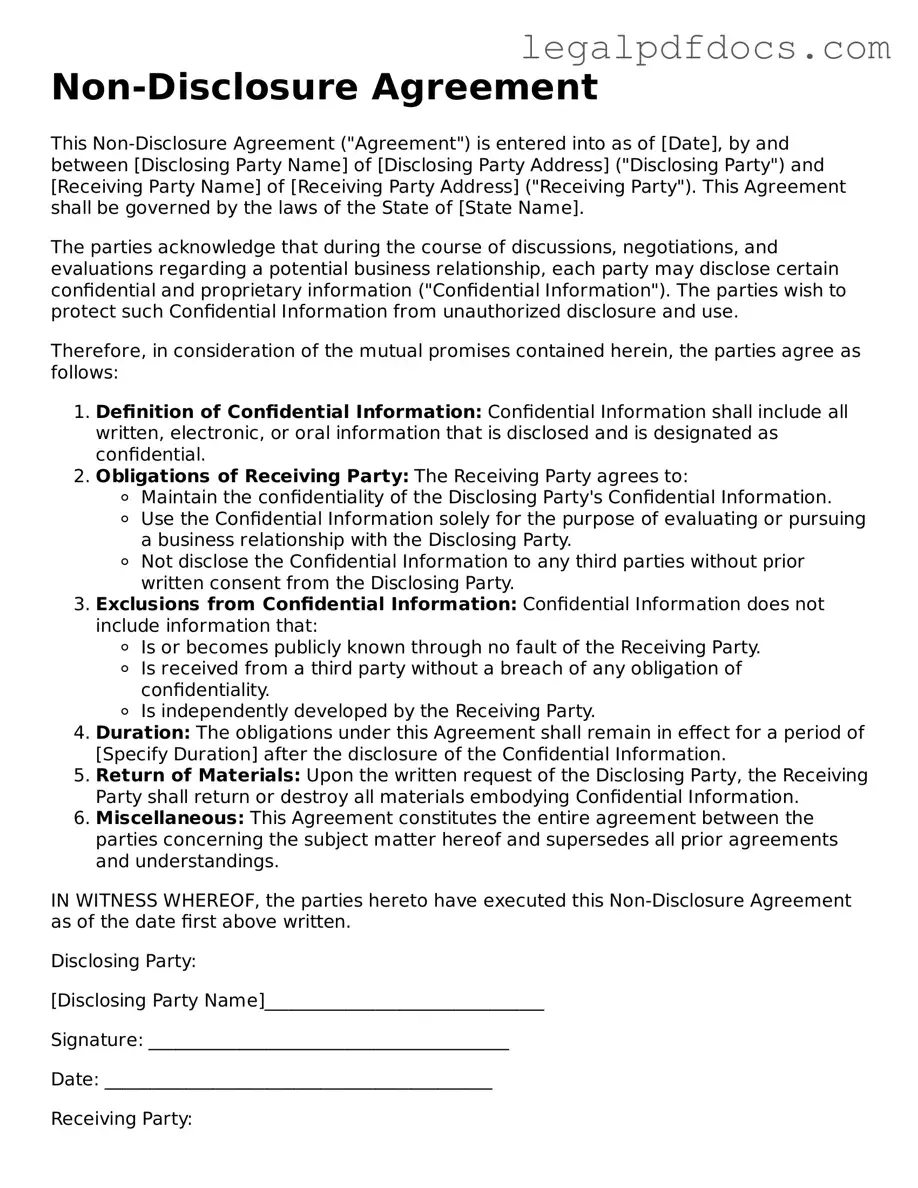Non-disclosure Agreement Template
A Non-disclosure Agreement (NDA) is a legal contract that establishes a confidential relationship between parties, ensuring that sensitive information shared during discussions or collaborations remains protected. This form is essential for individuals and businesses looking to safeguard their proprietary information and trade secrets. If you're ready to secure your confidential information, fill out the NDA form by clicking the button below.
Open Non-disclosure Agreement Editor Here
